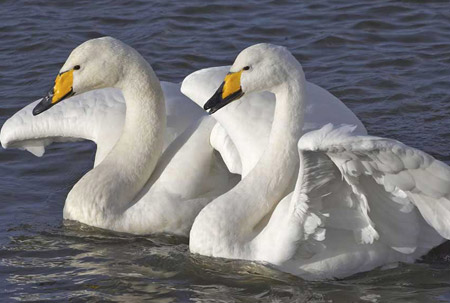The Department of Agriculture have issued an order to house poultry flocks and other captive birds, same coming into effect from today, in an effort to protect them from Avian influenza.
This order follows five detections of Avian influenza virus; more commonly called bird flu, found in wild birds across Ireland since December 2024 last.
Detections have already been identified in counties Galway and Dublin last December, with three further cases pinpointed in January of this year in counties Donegal, Westmeath and Wexford.
Following these identified cases, the Department of Agriculture has announced this immediate housing order to protect poultry flocks and captive birds from mixing with wild birds, who may be infected by the virus.
All ready in Northern Ireland, 64,000 birds are set to be slaughtered at one commercial poultry unit, situated in Co. Tyrone, following the discovery of a suspected case.
According to the HSE Health Protection Surveillance Centre, [HPSC] Avian influenza or “bird flu” is a disease of birds caused by type A strains of the influenza virus. It can affect all species of birds, some other animals (e.g. cats, horses) and can, although very rarely, infect humans.
Only the virus types of the H5 and H7 types are known to cause the highly pathogenic (HPAI) form of the disease. The most well-known example is the avian influenza subtype H5N1 viruses, currently circulating in poultry in parts of Asia and north-east Africa, which have caused human disease and deaths since 1997. Other avian influenza subtypes, including H7N9 and H9N2, have also infected people. Some of these infections have been very severe and some have resulted in deaths, but many infections have been mild or even without symptoms in humans.
To date, Hong Kong has reported 21 cases of H7N9 in humans, all traced to mainland China and involving contact with poultry.
Warning: Members of the public (Please inform your children) are strongly advised not to handle sick or dead wild birds and to report any such incident cases to the Department of Agriculture.
In 2017 three cases of the H5N8 bird flu virus were identified in North Co. Tipperary, while in 2018 the subtype H5N6 strain of avian influenza was detected in a dead Common Buzzard and in a White-Tailed Sea Eagle, latter found near Terryglass also in North Co. Tipperary.
In 2023 a number of sick and dead birds were found near Dromineer, once again in North Co. Tipperary.
This sudden housing order does not mean that human food safety is at any immediate risk.


Leave a Reply